The Hanging Gardens of Helvellyn
Wild flowers? Lakeland grows nothing but grass... [1300 words 6 mins
When you walk up a hill, you aren't looking at the vegetation, you're looking at the view. The view is all along Ullswater, and sunlight on the crags of St Sunday, and perhaps the Pennines in the distance. The vegetation is grass. Mountains don't have soil, they have stones. So they don't have any plant life.
One June morning I set out uphill from Glenridding on a mission to disprove everything I've just written in the previous paragraph. Now, the usual route up Helvellyn is by the ridge past Dollywaggon Pike and Nethermost. People like ridges, but plants hate the places. There are good reasons, if you're a plant, not to be growing on any ridge.
The first reason is a four-legged one with horns, small black feet, and an efficient set of teeth. That first reason is a sheep. When sheep and people were removed from hilltops in 2001’s foot-and-mouth year, it was bad news for local businesses but a great day for plants. On Cross Fell, species thought extinct for forty years sprang up among the grass stalks and spread pale flowers across the hillside.
The second problem, surprisingly, is drying out. You may think there's plenty of rain on Helvellyn. But steep slopes and stony ground mean that rainwater drains away, taking any soil goodness with it. Meanwhile a chilly wind snatches moisture from the poor plant's exposed leaves.
Wind also damages the plants by shredding them – any leaf wider than the wiry grasses is liable to get torn to bits. Finally, there's the frost. Ice bursts the internal plumbing of your house, and freezing has the same effect on the cell walls of any adventurous plantlife high on Helvellyn.

So while all the fellwalkers are up on the ridges, the plants aren’t. Meanwhile, the people aren't in Helvellyn's eastern coves, because they are steep to get into and ringed at the top with black broken crag. But those black crags are just where I hope to find the hanging gardens of Helvellyn.
Ten steps above Ruthwaite Lodge, the soggy soil shows the plants of where sheep graze but not to destruction. There are the tiny, bright flowers of tormentil, glowing like a yellow mini-sun among the grasses. Tiny but brilliant blue milkwort is the English gentian as it were, but a gentian that's scaled down to about ten percent. Eyebright is just a white speck until you kneel in the damp turf and really peer, when it shows brilliant hints of green and pink. These are not rare plants for the specialist. Anywhere that grass hasn't been nibbled to the roots, you're liable to find these bright flowers in it.
But the first small crag has a stream trickle, and less familiar plants: ones that don't grow underfoot, but only in rock cracks out of reach of the sheep. Meadow rue is fairly common entangled in the undergrowth of a field-edge ditch, but up here on Helvellyn I find Alpine meadow rue, slightly smaller, and looking different and elegant against dark dripping rocks.
Here too is golden saxifrage with its small succulent leaves, whose name (from the Latin) means the rock-breaker. And the alpine lady's mantle, another common woodland plant but again in its diminished version; its greenish flowers, so dull in grassland, again look their best against bare rock.
Like many successful human rock climbers, alpine plants are not large. There's no need: growing out of a crack in the rock, there's no rank vegetation alongside to struggle up through for the sunlight. Smallness is beautiful when it's growing out of a crag at eye level, but has other advantages as well. Smallness stays down out of the leaf-ripping winds, and cosy under the snowpatch. Grow a lot of moisture-finding roots below, and spread only a few leaves into the dehydrating air.
My wife, who's a serious gardener, tells me that these Alpines appeal to the gentlemen gardeners among us.
"Is it the sense of adventure," I wondered, "the edelweiss and the gentian high on the solitary ledge where only go the intrepid mountain man and the chamois?"
No, she says, it's not that, exactly. "It's because it involves fiddling around on the greenhouse staging, and making little labels."
Steep rough ground led into Cock Cove, out of sight above. And here were lush stands of thick-leaved roseroot, like a grey-green fur covering the crag. Roseroot, visible from afar, is the signal of the hanging gardens. And what it marks is a mineral richness. On mountaintops, rainwater seeps through the gravel, carrying away any soil goodness. But on the mountain's steeper sides, the water seeps back out again, enriched with minerals from inside the hill. Such a mineral flush may emerge on ledges too high and steep for sheep; the high combe will also be sheltered from wind, and in the chill of winter will carry a blanket of snow. Because of the way the glaciers grew, high steep combes face between east and north. From the point of view of a plant slooking for some sunlight, east is obviously better.
This fairly simple calculation had led me to Ruthwaite and Nethermost Combes, high on the eastern side of Helvellyn. That and the fact that 'The Hanging Gardens of Allen Crags and Esk Pike' just doesn't make such a great header at the top of the article.
The roseroot's fat rounded leaves are a larger version of the stonecrop and the saxifrage. And both have an odd resemblance to plants that grows in the desert. This is not quite so odd when you discover that this particular leaf, with its minimum surface area and waxy coating, is a defence against drying out – roseroot is the alpine cactus. The roseroot's big greenish-yellow flowers were, in late June, almost over. But in case I suspected that all high-hill plantlife was titchy or else grey-green, goldenrod was thrusting big yellow spikes into the mist. Purple thyme wriggled out of the drier cracks. Hawkbit, a stringy version of the common dandelion, gave another splash of yellow. Surprisingly to me, alongside it was blue cranesbill (known to gardeners as species geranium). Cranesbill is normally a meadow flower of the chalk and limestone: but it was enjoying the rock juices seeping out into Ruthwaite Cove.
Below the crags, the scree that the sheep can't get into without breaking their little woolly ankles was being exploited by the frothy-green parsley fern. Below that, the grassy bottom of Cock Cove was being exploited by the Herdwick sheep. I scowled at it, to try and discourage it from eating up the scenery.
Hard Tarn is so named because, however easy it is to spot from the Helvellyn's ridgeline overhead, when you're down among the glacier slabs and grassy ledges looking for it, Hard Tarn hard to find. It lies on ground smoothed by glacier and grazed down by the Herdwick sheep. Accordingly there are few flowers. There are, though, some pretty clear glacier scratches next to the tarn's tiny outflow, as well as (even more interestingly) some sheltered boulders for sitting on at lunchtime.
After a peaceful but slightly damp sandwich, I contour onwards across Nethermost Cove. At the top of the stony slope, I encounter for the first time that day one of Lakeland's larger and most colourful species, the bright-jacketed human being, making its way along its favoured habitat of Striding Edge.
Most people's Alpine gardens fail for one reason: the boulders just aren't big enough. Even if you get a crane in – you're never going to compete with Dollywaggon Pike. So toss out the trowel, and do your garden visiting high on the side of Helvellyn.


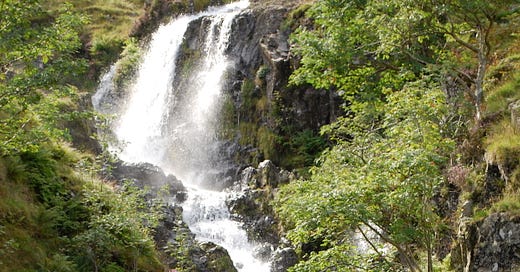



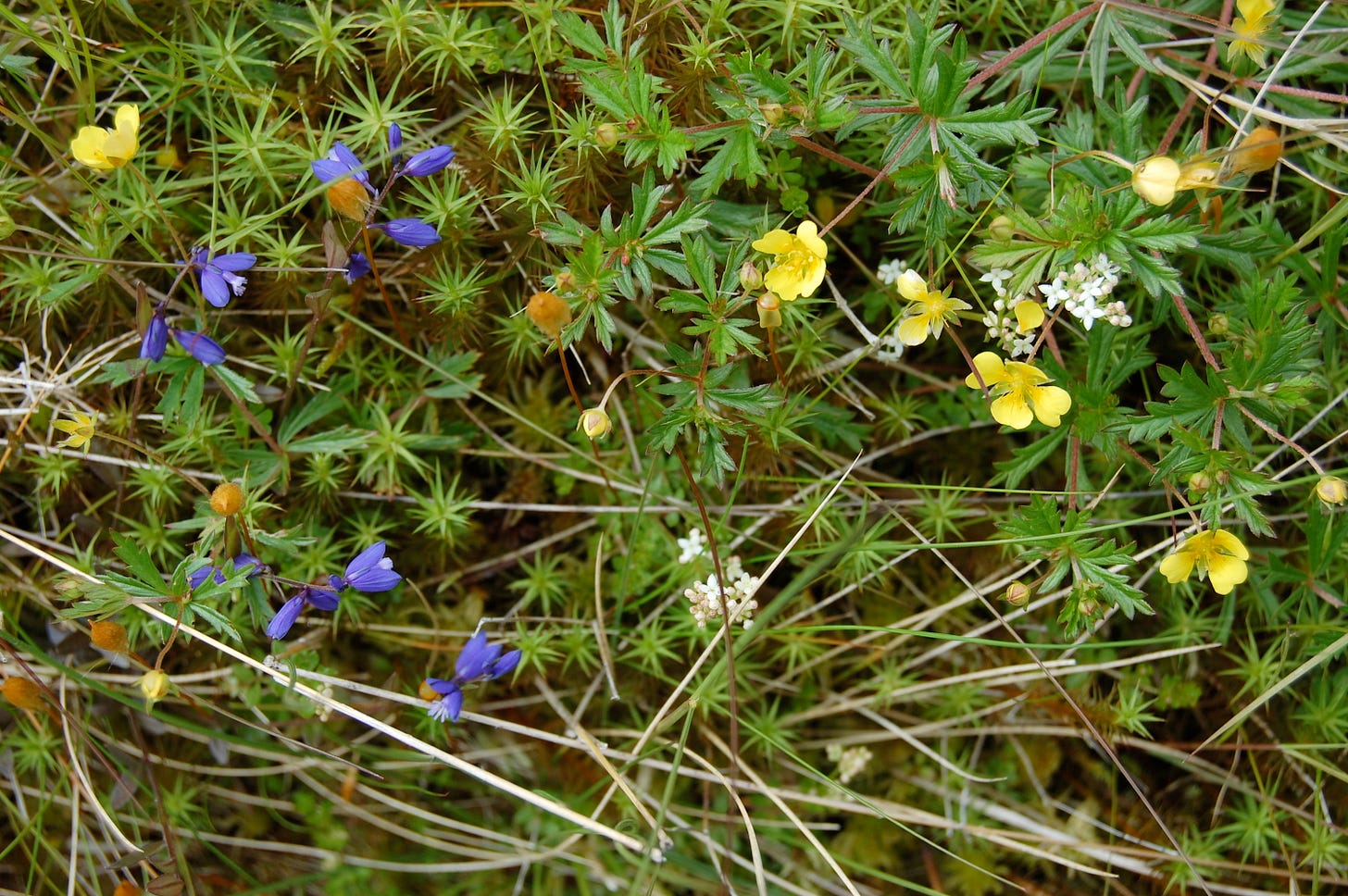


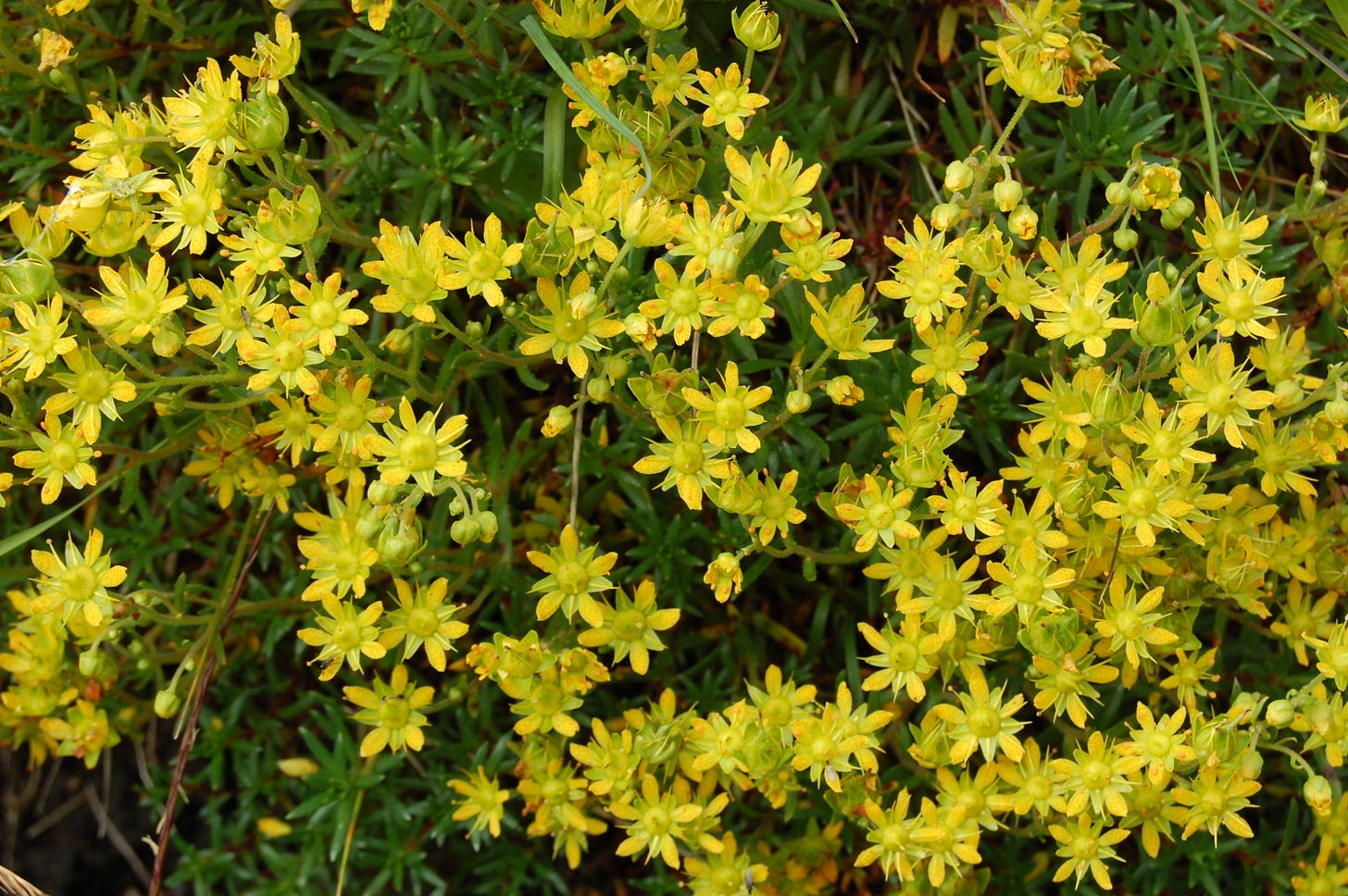
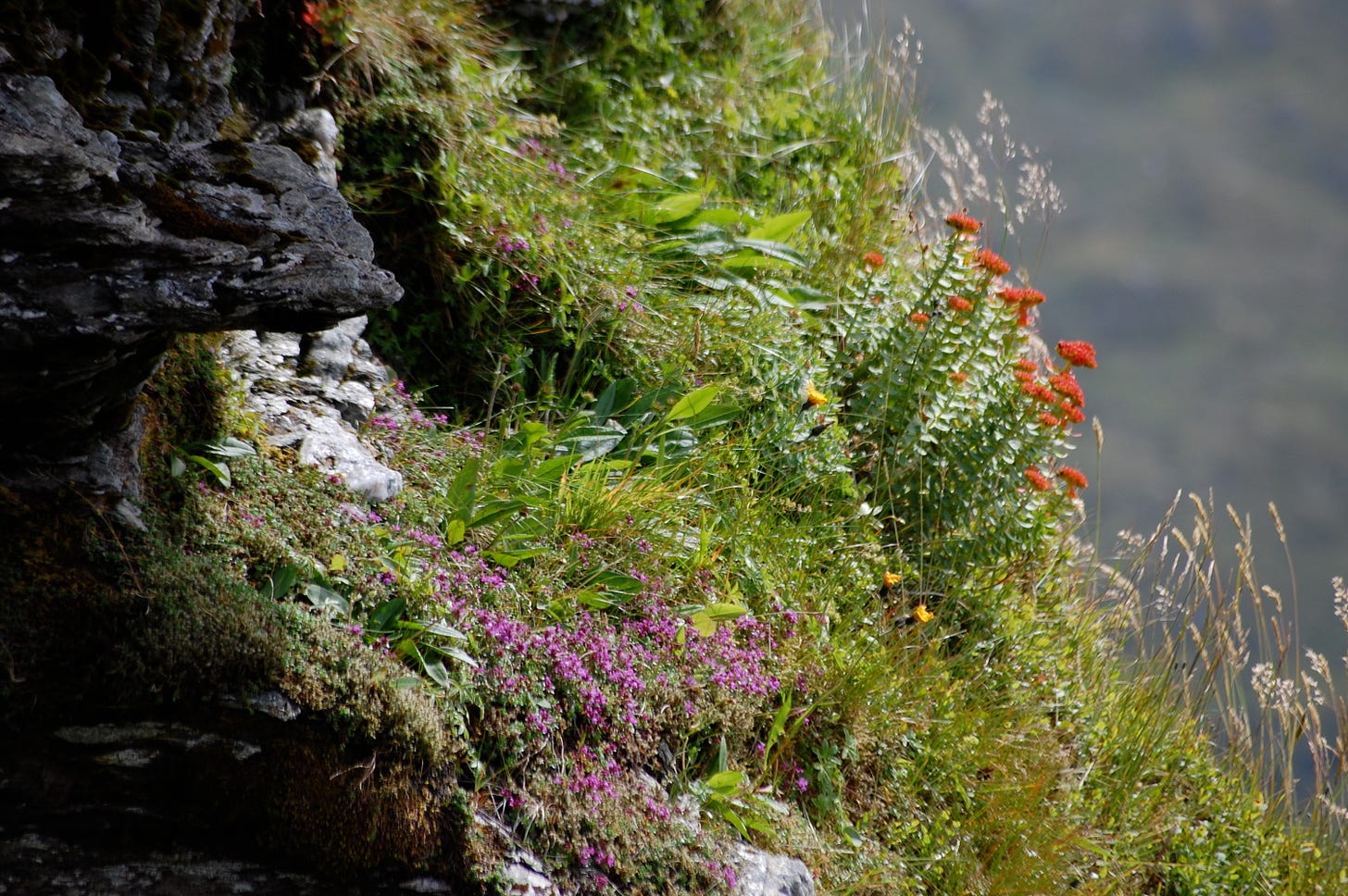
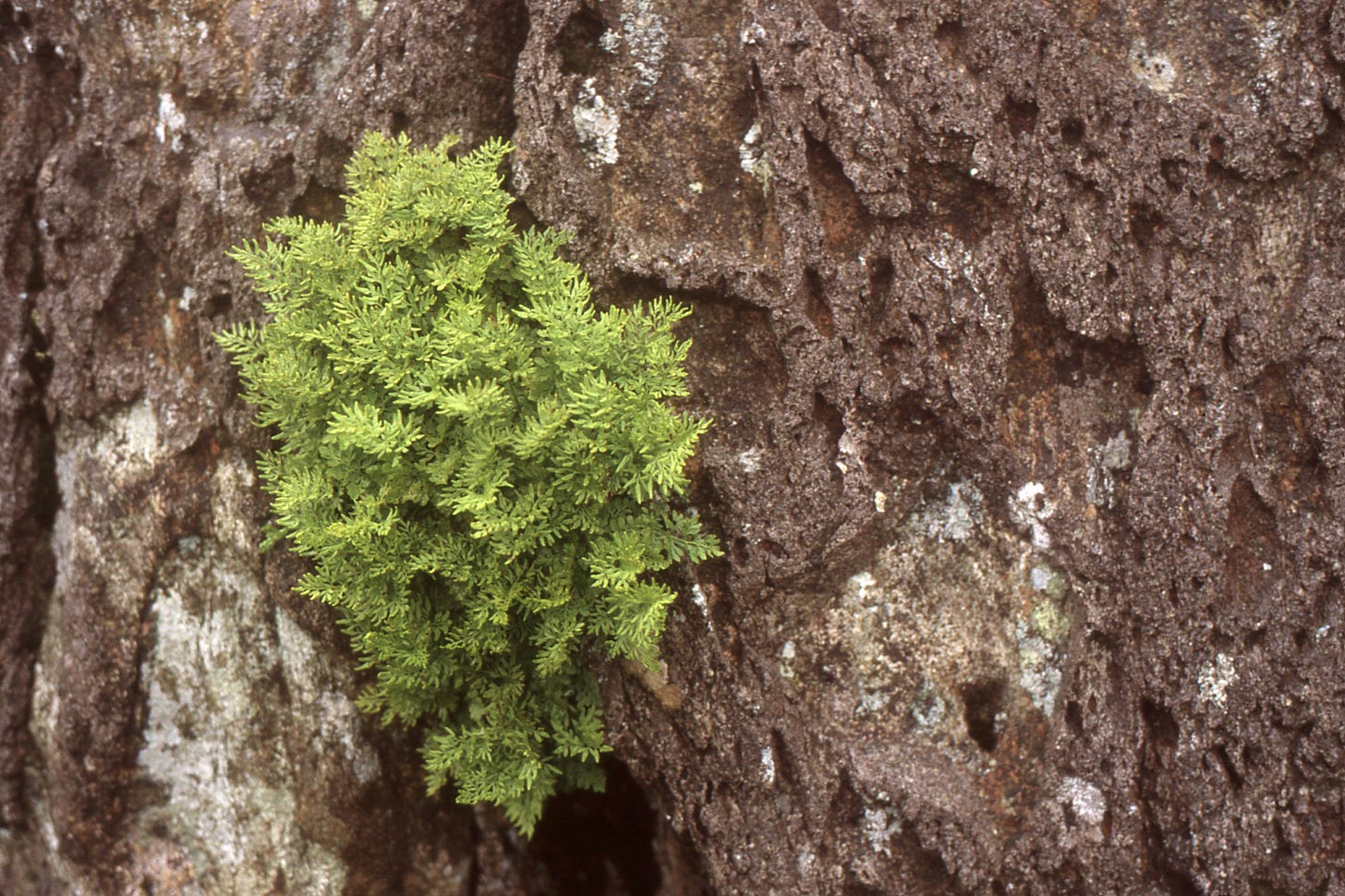
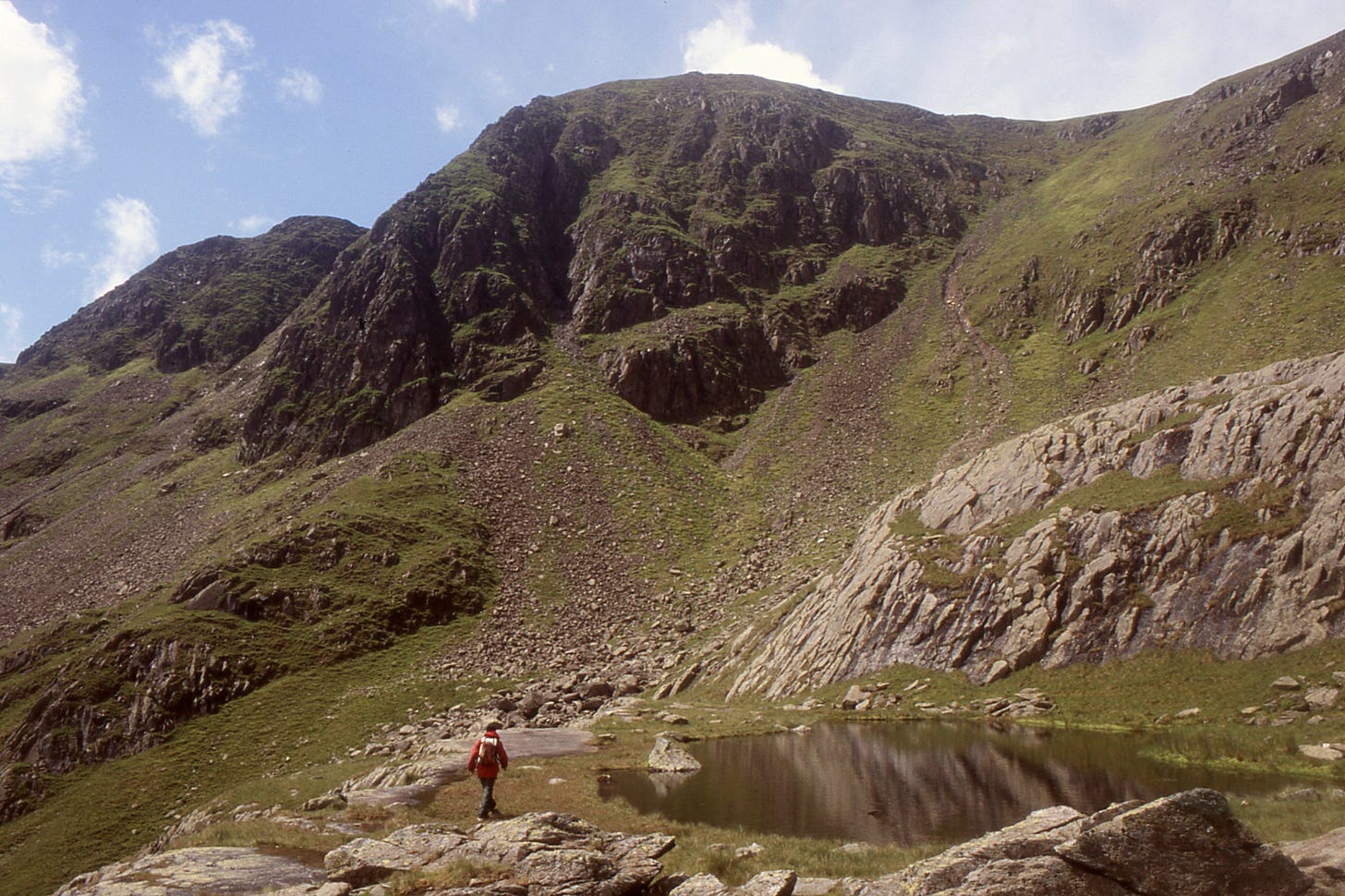
Cinquefoil (yellow tormentil) grows all the way over here in our mountains as well, mostly in meadows.
Such lovely, you-are-there prose! Thank you!